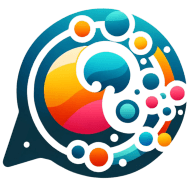9 Ways to Revive a Stagnating Loyalty Program and Re-Engage Customers
Revitalizing a stagnant loyalty program is crucial for businesses seeking to re-engage customers and boost retention. This article presents expert-backed strategies to breathe new life into underperforming loyalty initiatives. From innovative reward structures to personalized experiences, discover actionable insights to transform your loyalty program and reconnect with your customer base.
- Alumni Become Cornerstone of Aftercare Program
- Transform Loyalty into Professional Partnership
- Empower Clients Through Charitable Initiative Voting
- Instant Rewards Spark Immediate Customer Action
- Align Rewards with Meaningful Customer Experiences
- Personalize Perks Based on Shopping Habits
- Referrals Earn Credits for Home Improvement Advice
- Shift Focus to Patient-Centered Health Benefits
- Introduce Tiered Milestones for Tangible Progress
Alumni Become Cornerstone of Aftercare Program
For a while, our aftercare program was somewhat stagnant. We performed our duties—the check-in calls, the support groups—but engagement was low. It felt as if we were merely checking a box, and I knew it wasn't effective. It seemed the program had lost its purpose somewhere along the way.
The one change that completely transformed things was making our alumni the cornerstone of the program. We shifted the focus from "what you can receive" to "what you can contribute." Instead of just asking them to attend for support, we asked them to become a source of support for others. We invited them to return and speak at meetings, and we created a mentorship program where an alumnus could assist a new client.
It completely re-engaged people. They weren't just attending for themselves anymore; they were showing up for others. It provided them with a deeper sense of purpose and a connection to the community. They began taking ownership of the program, and it evolved into a hub of activity, not just a service we provided.
The impact was immediate. The alumni who were part of the program had a lower relapse rate and a more profound sense of purpose. My advice is straightforward: the best way to revitalize a program is to give it a purpose that's larger than itself. People are re-engaged not by what they can receive, but by what they can give.
Transform Loyalty into Professional Partnership
In our business, we're not selling to people who are just looking for a deal. Our customers are professionals, and they care more about quality, efficiency, and reliability than they do about a few points off a purchase. In the early days, our loyalty program was a standard, points-based system—buy a certain amount, get a discount. It was easy to run from an operations standpoint, but it was a total failure. It felt transactional and impersonal, and it didn't speak to who our customers are. The program just stagnated.
The one change that completely revived it and made the biggest difference was realizing that we had to stop rewarding them for their loyalty and start rewarding them for their professionalism. We changed the entire philosophy of the program from a "loyalty program" to a "partnership program." We still used a points system, but we completely changed what the points could be used for.
From a marketing standpoint, we started promoting things that actually helped our customers in their own business. We stopped talking about discounts and started talking about exclusive access to professional benefits. From an operations standpoint, we used the points to provide tangible, professional services. We gave members free, expedited shipping, which can be a game-changer for a shop. We gave them direct access to our most senior technical experts, bypassing the standard support line. The ultimate reward wasn't a discount; it was a spot in a small, exclusive workshop or a training session on a new product.
The results were remarkable. We saw a huge jump in enrollment and engagement. Our customers weren't just buying from us; they were actively using the benefits. But the most important outcome was the change in our relationships. We went from being a vendor they used to being a partner they relied on. When you help a professional with their own business, you create a level of loyalty that is unbreakable.
My advice is that loyalty programs in a B2B space have to be about more than money. You have to provide real, professional value that helps your customers do their jobs better. Find out what they need to succeed, and then use your program to give it to them. That's how you build true, lasting loyalty.

Empower Clients Through Charitable Initiative Voting
The single most effective change we made was inviting our past clients to act as trusted advisors by letting them vote on the local charitable initiatives we support each quarter. By giving them real input into how we contribute to our community, clients started to feel genuinely connected to our mission--not just our transactions--and that renewed sense of shared purpose sparked a significant increase in program engagement and referrals. People want to know their loyalty has a meaningful impact beyond their wallet.

Instant Rewards Spark Immediate Customer Action
I was working with a major boot and workwear retailer whose loyalty program wasn't broken; it was just uninspiring. Customers liked the brand, but it was more or less a reward program in name, not in reciprocity. That gap between joining and seeing any real payoff was quietly killing engagement and keeping the program's value flat.
So we flipped the script. Every new member now gets points the moment they join, enough to put a reward clearly within reach before they've spent a dime. We paired that with a double-points boost on their first purchase to spark immediate action.
The mechanics were intentionally simple: $1 = 1 point, 200 points = $10 reward. No mental math, no fine print. That combination of instant value and a clear next step tapped into two powerful motivators: the satisfaction of visible progress and the urgency of not missing out. We also layered in ways to earn outside of purchases — like connecting on social media — to keep engagement alive between transactions.
The result? Sign-ups became purchases, purchases turned into redemptions, and customers came back faster — all because the program started delivering value from day one.

Align Rewards with Meaningful Customer Experiences
The most effective change came from shifting rewards from a generic point system to experience-based milestones that reflected customer values. Instead of small discounts spread thinly, we introduced tiered rewards that unlocked exclusive access, such as early enrollment in wellness workshops and priority scheduling with specialists. The first milestone was achievable within two visits, which created an immediate sense of progress. Engagement data showed a sharp uptick within six weeks, with repeat visit frequency rising by nearly 30 percent compared to the previous quarter. Customers expressed that the program finally felt personal and relevant rather than transactional. By aligning rewards with meaningful experiences rather than minor financial incentives, the program regained momentum and rebuilt loyalty on a stronger foundation.

Personalize Perks Based on Shopping Habits
The first step for any marketing challenge is to gather the right information to understand matters better. For the issues concerning an inactive loyalty program, customer data provided the necessary insight. It fit the hypothesis of understanding why customers failed to engage: rewards seemed too familiar, too far off, and uninspiring. Such insight allowed me to emphatically address the issue by reshaping the program from a transaction-based incentive plan to an experience-driven one. Rather than handing out discounts on long point accumulation, we rewarded surprise perks, early product access, and tiered recognition. Personalization of the program was the single most beneficial change. We began to leverage data and tailor the perks based on shopping habits, making the customer feel special and the program relevant and enticing. For instance, someone who frequently buys coffee would be given bonus points or a free specialty drink.

Referrals Earn Credits for Home Improvement Advice
I revived our loyalty program by introducing 'Renovation Rewards'--where clients earn credits toward free home improvement consultations for every successful referral. After one homeowner used her credits for my team's advice on converting her basement into rental space, she doubled her income and became our most vocal advocate overnight. This tangible value exchange transformed passive customers into active partners who now see us as long-term equity builders.
Shift Focus to Patient-Centered Health Benefits
The turning point came when we shifted the focus of the loyalty program away from transactional rewards like generic discounts and toward benefits that spoke directly to our patients' daily health needs. Instead of tallying points for visits or prescriptions, we introduced a structure that granted early access to wellness services and complimentary health check-ins after a set number of months in the program. Patients valued this approach because it gave them tangible, immediate care rather than something that felt distant or unrelated to their health priorities.
The strongest re-engagement came from building in predictability. Patients knew that after six months of continuous enrollment, they would receive a free preventive screening, which made them feel cared for and gave them a reason to stay consistent. Participation grew steadily once patients understood that loyalty translated into better health oversight rather than only cost savings. That alignment between the program and the core mission of accessible, patient-centered care reignited interest and kept patients involved far more effectively than traditional points-based incentives.

Introduce Tiered Milestones for Tangible Progress
We revived a stagnating loyalty program by shifting the focus from generic rewards to personalized, experience-driven incentives. Rather than offering standard discounts, we analyzed customer behavior and preferences to deliver targeted rewards aligned with their interests and usage patterns.
The single most impactful change was introducing tiered milestones that recognized both frequency and engagement. Customers could see tangible progress and unlock benefits that felt meaningful, creating a sense of accomplishment and exclusivity. This adjustment led to a measurable increase in repeat engagement, higher redemption rates, and improved overall satisfaction. The experience highlighted that personalization and clear pathways to rewards can transform a stagnant program into a motivating, relationship-building tool.




